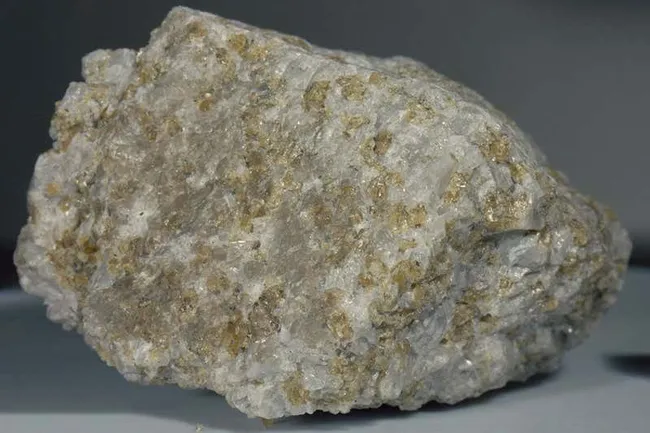
An image of the Apollo 17 moon rock troctolite 76535. This study was focused on sample 79221. (Image credit: NASA/Johnson Space Center)
For the first time, researchers from the U.S. Naval Research Laboratory (NRL) have identified hydrogen in lunar soil samples brought back over 50 years ago by the Apollo 17 mission. This finding, published in the journal Communication Earth & Environment, suggests that the hydrogen was formed by solar wind and comet strikes, offering a potentially invaluable resource for future lunar missions.
Implications for Lunar Missions, The presence of hydrogen on the moon is a game-changer for future space exploration. Not only does it suggest the possibility of extracting water from the lunar soil, but it also opens the door to using this water for life support and rocket fuel through electrolysis, splitting hydrogen with oxygen. This method could significantly reduce the costs and logistical challenges of transporting water from Earth to the moon, making sustained human presence on the lunar surface more feasible.
Changing Perceptions of Lunar Geography. Interestingly, this discovery challenges previous assumptions about the moon's water distribution. Data from the retired SOFIA infrared telescope indicates that water in the form of ice might be more widespread across the lunar surface than previously thought, not limited to permanently shadowed regions near the poles.
The Artemis Program and Future Missions. NASA's Artemis program, aiming to send astronauts to the Lunar Gateway and then to the lunar surface, stands to benefit greatly from this discovery. Utilizing in-situ resources like lunar hydrogen can significantly aid the program's goal of establishing a sustainable human presence on the moon.
 Beyond the Moon, A Stepping Stone to the Stars. The implications of finding hydrogen in Apollo moon rocks extend far beyond lunar exploration. This discovery holds the key to not just sustaining human life on the moon but also transforming it into a strategic outpost for deeper space missions. Envision the moon as a bustling spaceport, where astronauts can refuel and resupply before embarking on voyages to Mars and other destinations in our solar system and beyond. The reduced gravitational pull of the moon makes it an ideal location for manufacturing and launching spacecraft, leveraging the moon-made rocket fuel derived from lunar water. This could mark the beginning of an era where the moon becomes a central hub in humanity's quest to become an interstellar species.
Beyond the Moon, A Stepping Stone to the Stars. The implications of finding hydrogen in Apollo moon rocks extend far beyond lunar exploration. This discovery holds the key to not just sustaining human life on the moon but also transforming it into a strategic outpost for deeper space missions. Envision the moon as a bustling spaceport, where astronauts can refuel and resupply before embarking on voyages to Mars and other destinations in our solar system and beyond. The reduced gravitational pull of the moon makes it an ideal location for manufacturing and launching spacecraft, leveraging the moon-made rocket fuel derived from lunar water. This could mark the beginning of an era where the moon becomes a central hub in humanity's quest to become an interstellar species.
Charting a New Course in Space Exploration. The discovery of hydrogen in the Apollo moon rocks isn't just a scientific triumph; it's a beacon lighting the path to a future where the moon plays a pivotal role in humanity's spacefaring endeavors. As we contemplate the establishment of a permanent human colony on the lunar surface, we are not merely talking about a distant outpost in space. We are envisioning a thriving community that could serve as a springboard for intergalactic exploration. This lunar colony, sustained by the very resources the moon offers, could be the cornerstone of our journey to the stars. In this new age of exploration, the moon is no longer just a celestial body to visit; it's a vital partner in our ongoing adventure into the vast, uncharted realms of space. The discovery of hydrogen is more than a scientific milestone; it's a promise of a future where the moon is at the heart of our interstellar ambitions.



